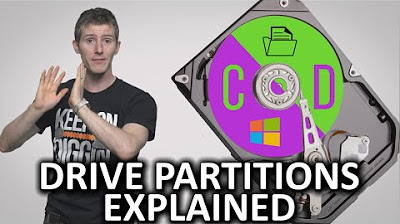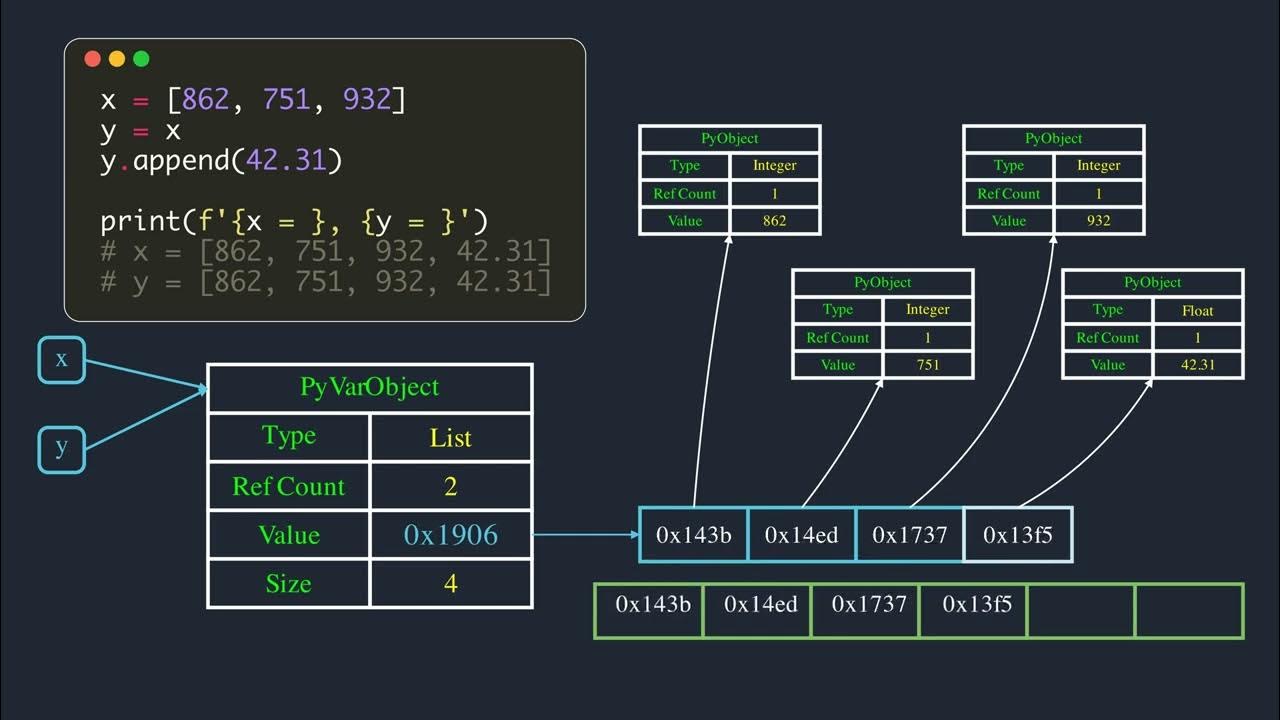L-5.4: Variable size Partitioning | Memory management | Operating System
Summary
TLDRThis script delves into the concept of variable partitioning in memory management, contrasting it with fixed partitioning. It explains how variable partitioning avoids internal fragmentation by allocating memory at runtime based on process needs, allowing for greater flexibility in process sizes and enhancing the degree of multiprogramming. However, it introduces external fragmentation, where free memory is scattered and unusable for processes requiring contiguous space. The script also touches on the complexity of allocation and deallocation in variable partitioning and suggests compaction as a remedy, despite its drawbacks.
Takeaways
- 📚 **Variable Partitioning** is a memory allocation strategy where space in RAM is allocated to processes only when they require it, avoiding pre-allocation and thus reducing internal fragmentation.
- 🔄 **Fixed Partitioning** contrasts with Variable Partitioning by dividing RAM into fixed-size partitions in advance, which can lead to internal fragmentation when processes don't perfectly fit partition sizes.
- 🍕 **Pizza Analogy** for memory allocation illustrates the concept of pre-allocating (Fixed Partitioning) versus allocating based on demand (Variable Partitioning), like cutting pizza slices to order.
- 🚫 **Internal Fragmentation** is a waste of memory space that occurs in Fixed Partitioning when a process doesn't fully utilize its allocated partition.
- 🔑 **Dynamic Allocation** in Variable Partitioning allows for memory to be allocated at runtime based on a process's actual needs, potentially eliminating internal fragmentation.
- 🔝 **Degree of Multiprogramming** is enhanced in Variable Partitioning, as there's no fixed limit on the number of processes that can be loaded into RAM, unlike in Fixed Partitioning.
- 🚀 **No Size Limit** on processes in Variable Partitioning means that very large processes can be accommodated, unlike in Fixed Partitioning where the process size is limited by partition size.
- 🕳️ **External Fragmentation** can occur in Variable Partitioning when free memory exists but isn't contiguous, preventing the allocation of processes larger than the available contiguous space.
- 🔄 **Compaction** is a method to overcome external fragmentation by moving processes to consolidate free space, though it's resource-intensive and can interrupt process execution.
- 📈 **Allocation and De-allocation** in Variable Partitioning are more complex due to the dynamic nature of process and hole management, requiring strategies like bitmaps and linked lists.
Q & A
What is Variable Partitioning?
-Variable Partitioning is a memory allocation strategy where space in RAM is allocated to processes only when they require it, as opposed to Fixed Partitioning where partitions are created in advance.
How does Fixed Partitioning differ from Variable Partitioning?
-In Fixed Partitioning, the RAM is divided into fixed-size partitions before any process arrives, which can lead to internal fragmentation. Variable Partitioning, on the other hand, allocates memory dynamically at runtime based on the process's needs, reducing the chance of internal fragmentation.
What is meant by 'Internal Fragmentation' in the context of memory management?
-Internal Fragmentation occurs when a process occupies a partition that is larger than its actual memory requirement, resulting in unused space within the partition.
Why does Fixed Partitioning always result in internal fragmentation?
-Fixed Partitioning results in internal fragmentation because the partitions are predefined in size, and when a process occupies a partition, the remaining space in that partition cannot be utilized by other processes, leading to wasted space.
Can you explain the analogy of ordering a pizza in relation to memory partitioning?
-The analogy compares Fixed Partitioning to ordering a pizza that is already sliced into fixed pieces, which may not perfectly match the appetite of the eaters, leading to waste. Variable Partitioning is likened to ordering a whole pizza and cutting it according to the needs of the eaters, minimizing waste.
What advantage does Variable Partitioning have over Fixed Partitioning in terms of memory utilization?
-Variable Partitioning allows for dynamic allocation of memory, which can prevent internal fragmentation and make more efficient use of available memory by allocating exactly the amount needed by each process.
What is the concept of 'Degree of Multiprogramming' mentioned in the script?
-Degree of Multiprogramming refers to the number of processes that can be executed simultaneously in the RAM. Variable Partitioning allows for a higher degree of multiprogramming since it does not limit the number of processes based on fixed partition sizes.
How does Variable Partitioning address the limitation on process size in Fixed Partitioning?
-Variable Partitioning does not impose a maximum size limit on processes as it allocates memory dynamically. This means that even very large processes can be accommodated, unlike in Fixed Partitioning where the maximum process size is limited by the largest partition.
What is External Fragmentation, and how does it occur in Variable Partitioning?
-External Fragmentation occurs when there is enough free memory collectively but not in contiguous blocks to accommodate a process. In Variable Partitioning, this can happen when processes exit and leave behind non-contiguous free spaces or 'holes' that cannot be combined to satisfy the memory requirement of a new process.
What is the solution to External Fragmentation as discussed in the script?
-The script suggests Compaction as a solution to External Fragmentation, which involves moving processes to consolidate free space, although it is an undesirable method due to the need to stop processes and the time-consuming nature of copying process data to new memory locations.
How does Variable Partitioning handle the complexity of allocation and deallocation of memory?
-Variable Partitioning manages the complexity of allocation and deallocation through the use of data structures like bitmaps and linked lists, which help track the availability of memory and the placement of processes in the RAM.
Outlines

This section is available to paid users only. Please upgrade to access this part.
Upgrade NowMindmap

This section is available to paid users only. Please upgrade to access this part.
Upgrade NowKeywords

This section is available to paid users only. Please upgrade to access this part.
Upgrade NowHighlights

This section is available to paid users only. Please upgrade to access this part.
Upgrade NowTranscripts

This section is available to paid users only. Please upgrade to access this part.
Upgrade NowBrowse More Related Video

L-5.2: Memory management Techniques | Contiguous and non-Contiguous | Operating System

What are Drive Partitions?

L-5.3: Internal Fragmentation | Fixed size Partitioning | Memory management | Operating System

Manajemen Memori 2

3 - First-fit, Best-Fit, Worst-Fit Memory Allocation Methods | Memory Management | OS

How variables works in Python | Explained with Animations
5.0 / 5 (0 votes)